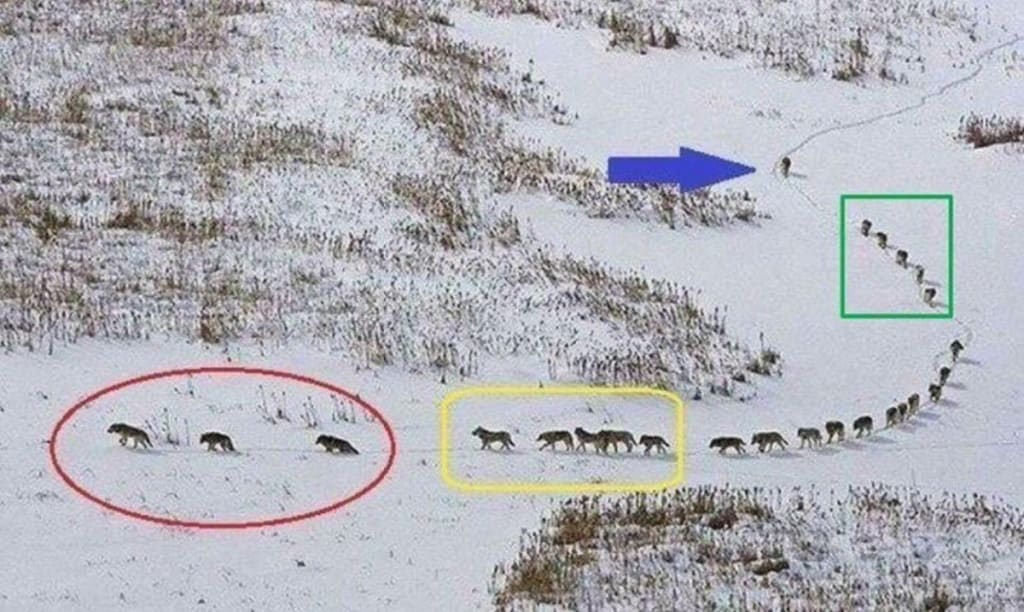Wolf Leadership
Wolf pack behavior is a model of leadership tactics.

The 3 in front are old & sick, they walk in front to set the pace of the running group lest they get left behind.The next 5 are the strongest & best, they are tasked to protect the front side if there is an attack. The pack in the middle are always protected from any attack.The 5 behind them are also among the strongest & best; they are tasked to protect the back side if there is an attack.The last one is the LEADER. He ensures that no one is left behind. He keeps the pack unified and on the same path. He is always ready to run in any direction to protect & serves as the 'bodyguard' to the entire group.
This picture and explanation first came across my radar through Linkedin early last year.
It has resurfaced in my feed as Jerrick approaches an inflection point and my role as CEO shifts from one where I rolled up my sleeves to work side by side with my team, to one where I am rolling down my sleeves, buttoning up and spending the next month visiting with investors to tell the story of how we have built the first quality long form social media platform. The process has become a study in the many responsibilities of an authentic CEO and leader.
CEO Culture

The wolf pack analogy in nature captures the essence of corporate leadership. The CEO is consistently ensuring the collective integrity of the group. The CEO understands that to execute, it takes a capable team and a clear unambiguous plan of action.
In the wolf pack, the alpha has the confidence to fend off a disruptive attack from the side, either alone or with quick help from the pack.
A wolf pack, particularly a group of 25, would typically not be vulnerable to a disruptive attack. Wolves are apex predators. They're typically doing the stalking, not the other way around. If a CEO does the job correctly there is a small probability of a disruptive attack that is not easily defendable.
The leader of the wolf pack, while prepared to defend, is always on the hunt for the pack and quick to pivot the group at the sight of prey.
Nurture The Pack

One of the more outdated aspects of the alpha wolf is the implication that competing and often attacking internally is the path to achieving and maintaining a leadership position. However, most wolves who lead packs achieved their position simply by mating and producing pups, which then became their pack. In much the same way, a CEO is meant to train and culture a group of individuals so that together they are capable of defending their strategic position. At the same time the CEO guides the collective toward progress and growth.
Leaders are meant to prepare the pack for growth and survival. Strength is found more often in the collective behavior of the pack, not the unilateral actions of the leader. Strong CEOs are both independently capable and instinctively nurturing.
The next 30 days for me are spent talking to investors as Jerrick gets set to maximize value in its underlying technology with the release of Vocal 2.0. While I set out to visit so many valued investors, I am confident that my pack is in formation, ready to aggressively take territory while defending its position as the premier long form social media platform.
About the Creator
Frank White
New Yorker in his forties. His counsel is sought by many, offered to few. Traveled the world in search of answers, but found more questions.






Comments
There are no comments for this story
Be the first to respond and start the conversation.